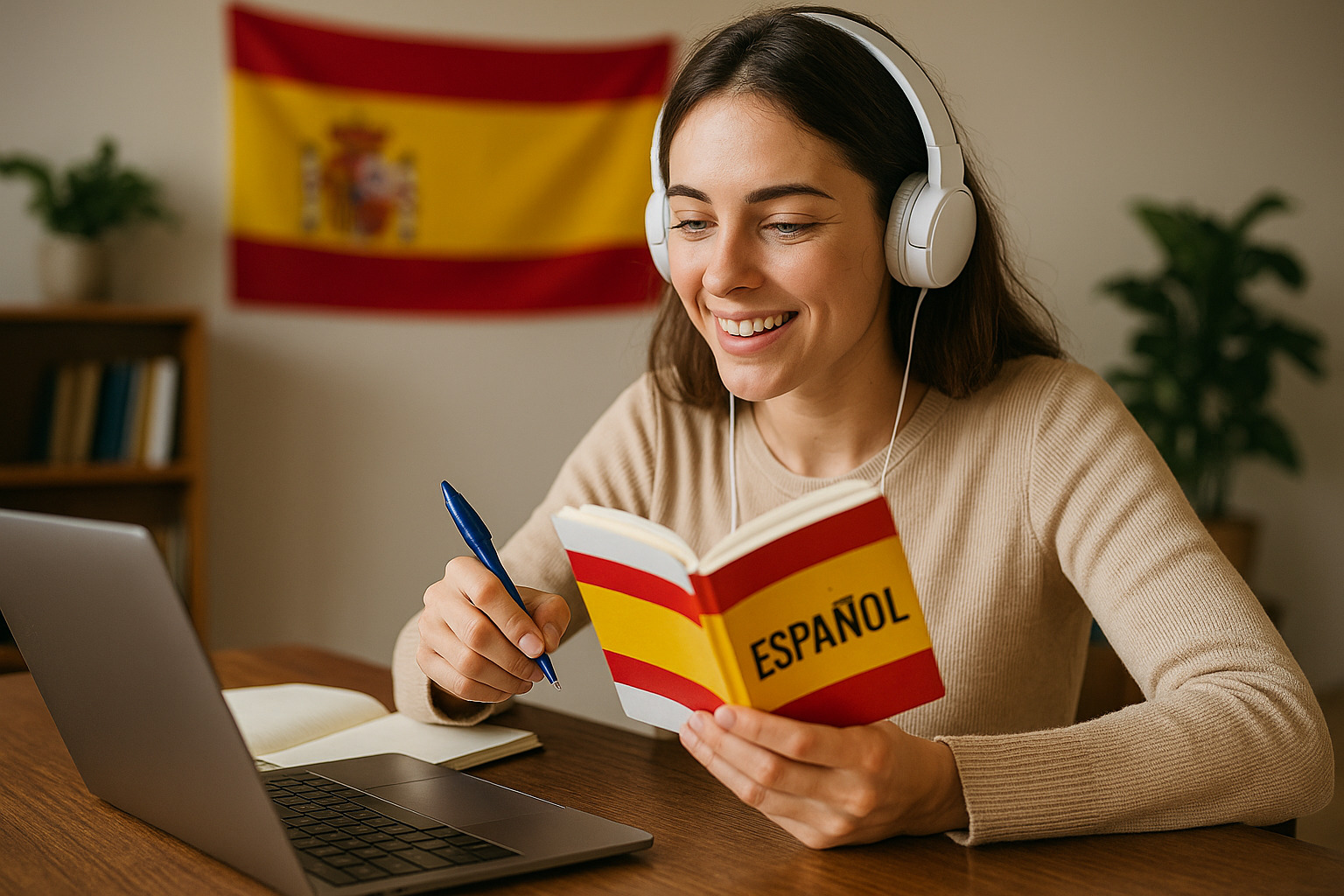
Learning Spanish without a formal class isn’t just possible—it’s often more effective for expats and travelers who want results that fit their lifestyle. Structured courses aren’t always accessible, affordable, or tailored to regional dialects. So how do you build fluency from scratch or revive those rusty school lessons? You build habits, use smart tools, and engage daily. Here’s how to do it without sitting in a classroom.
1. Turn Daily Life into a Language Lab
Living in Spain gives you one resource no app or textbook can replace: immersion. But passive exposure won’t teach much unless you interact with it actively.
- Read storefronts aloud. Speak every sign, menu, or advertisement you see. It trains pronunciation and reinforces vocabulary.
- Ask questions in shops. Even if you know the answer, ask “¿Esto es fresco?” or “¿Cuánto cuesta por kilo?” Practice creates recall.
- Translate your inner monologue. Describe your surroundings, tasks, or decisions in Spanish as they happen.
Language isn’t learned in blocks of time. It’s absorbed in moments. Every errand is a free lesson if you treat it that way.
2. Use Apps Strategically (Not Passively)
Language apps help, but only if you go beyond swiping and tapping. Skip the gamified distractions. Use these features instead:
- Cloze exercises: These test word recall in context. Memrise and LingQ offer excellent versions.
- Sentence mining: Pull useful phrases from podcasts or readings. Store them in apps like Anki or Quizlet with spaced repetition.
- Voice recording: Use tools like Speechling to compare your pronunciation with native speakers. Hearing your errors shortens correction time.
Apps won’t teach you to speak, but they will build the vocabulary and listening foundation that powers conversation.
3. Talk to Strangers—Even if You Sound Awful
The fastest way to speak better Spanish is to speak bad Spanish more often. Don’t avoid conversations. Initiate them.
- Ask for directions, even if you know the route. Get used to spontaneous language.
- Join a local intercambio. These language exchange meetups pair you with native speakers learning English.
- Use short bursts. Speak for one minute per day about what you’re doing. Record yourself. Tomorrow, try for two minutes.
Embarrassment fades. Fluency sticks.
4. Watch Spanish TV—With a Method
Watching Spanish series or films with subtitles helps, but not all viewing is productive. Turn passive watching into structured learning.
- Use dual subtitles. Extensions like Language Reactor show Spanish and English side by side.
- Pause and repeat key lines. Mimic the actor’s rhythm and tone. Then say it from memory.
- Pick shows with clear diction. Telenovelas are slow and dramatic—perfect for beginners. Avoid slang-heavy dialogue until you’re more advanced.
Listening trains your brain to recognize structure, not just vocabulary. It also boosts your confidence in real conversation.
5. Read Out Loud Like You Mean It
Reading silently teaches vocabulary. Reading aloud teaches you to speak.
- Start with children’s books or graded readers. Don’t aim for difficulty—aim for fluency.
- Shadow audio books. Play a native recording and speak in sync with the narrator. It forces your brain to keep pace.
- Read headlines in local newspapers. Then paraphrase the story in Spanish. This builds both vocabulary and storytelling.
Speaking out loud creates muscle memory and builds rhythm. Fluency isn’t about speed—it’s about flow.
6. Use Tech That Talks Back
AI tools aren’t limited to business use. They’re now practical tools for language learners who need feedback, fast.
Try using an artificial intelligence chat platform to roleplay real-life scenarios, practice travel dialogue, or explain unfamiliar grammar rules. Ask it to correct your Spanish writing or help rephrase sentences in casual vs. formal tone. It’s like having a 24/7 tutor that doesn’t charge by the hour.
7. Set Weekly Micro-Challenges
Goals like “become fluent” are vague and unmotivating. Micro-challenges push you to practice with purpose.
Here are a few ideas:
- Write a 200-word journal entry each day
- Learn 5 new verbs and use each in two original sentences
- Have a 10-minute chat in Spanish with a neighbor
- Translate a recipe and cook it using Spanish-only instructions
- Narrate your morning routine in Spanish aloud
Track your progress. Adjust as needed. Language growth comes in small, measurable wins.
8. Join Spanish-Speaking Social Media
Follow accounts in Spanish. Comment in Spanish. Watch reels in Spanish.
- Instagram & TikTok: Look for Spanish-language cooking, travel, or humor content.
- YouTube: Channels like Dreaming Spanish or Butterfly Spanish mix humor with effective instruction.
- Twitter/X or Threads: Follow Spanish-speaking politicians, artists, or comedians. Try responding to posts to practice writing.
This turns your feed into an immersive experience. The more you interact, the faster you adapt.
9. Turn Mistakes into Momentum
You will make errors. You’ll mispronounce words. You’ll get laughed at or misunderstood. Keep speaking anyway.
Each mistake is a benchmark of growth.
- Don’t apologize—rephrase. If someone looks confused, try again with simpler terms.
- Laugh at yourself. Humor keeps you relaxed and more willing to try.
- Ask for correction. Most locals will appreciate your effort and gladly help.
Confidence comes after you push through self-doubt. Every awkward exchange is one step closer to natural fluency.
10. Make Spanish Part of Your Identity
Don’t just learn the language—live it. Change your phone settings to Spanish. Write your grocery lists in Spanish. Tell your friends to speak Spanish at the bar, even if just for 10 minutes. Normalize it.
You’re not just picking up phrases. You’re building a second voice.
Fluency without a classroom doesn’t require perfection. It requires consistency, curiosity, and a willingness to sound silly until you don’t. Speak every day. Listen deeply. Keep going.